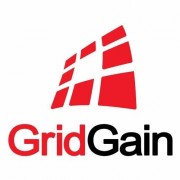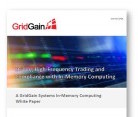E-book: In-Memory Computing for Financial Services – Part 2
New financial services challenges – are you ready for Modern Payments Systems, IoT and blockchain?
New financial services challenges – are you ready for Modern Payments Systems, IoT and blockchain?
Turbocharge high-frequency trading, fraud prevention and real-time regulatory compliance with in-memory computing.
As businesses cope with an explosion of data and users who expect real-time insights, many have turned toward in-memory computing solutions. As a result, in-memory computing platforms are becoming key infrastructure components for a growing number of organisations.
The financial services industry is already embracing the internet of things (IoT), using devices to collect data that needs to be analysed in real time and stored for historical analysis.
There is far more to regtech than regulatory technology, or at least there can and should be. Regtech, as it is coming to be understood, must be something qualitatively different from what it’s replacing and not just a faster and better version of the same thing.
As in-memory computing (IMC) gains momentum across a wide range of applications, from fintech and ecommerce to telecommunications and internet of things (IoT), many companies are looking to IMC solutions to help them process and analyse large amounts of data in real time.
With the cost of system memory dropping 30% every 12 months, in-memory computing has become the first choice for a variety of workloads within the financial services industry. In-memory computing can provide a lower TCO for data processing systems while providing an unparalleled performance advantage.
Stringent regulations and client protection initiatives enacted in the wake of the 2008 financial meltdown are causing unprecedented and growing technical challenges. Banks and other financial institutions must monitor, collect, and analyze vast amounts of data from multiple, disparate sources in real-time. This new white paper provides an overview of the current economic and regulatory […]
This paper looks at the current state of high-frequency trading – why it’s popular and what types of strategies and technologies are being used. It then explores how in-memory computing can meet the technological challenges and increase trading profits. As competition intensifies in the field of high-frequency trading, financial services firms need a new level […]
Download this eBook now to learn how an in-memory computing platform can address your company’s demanding current and future regulatory and client requirements.









